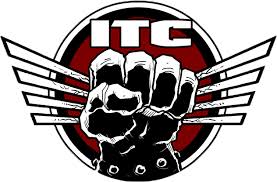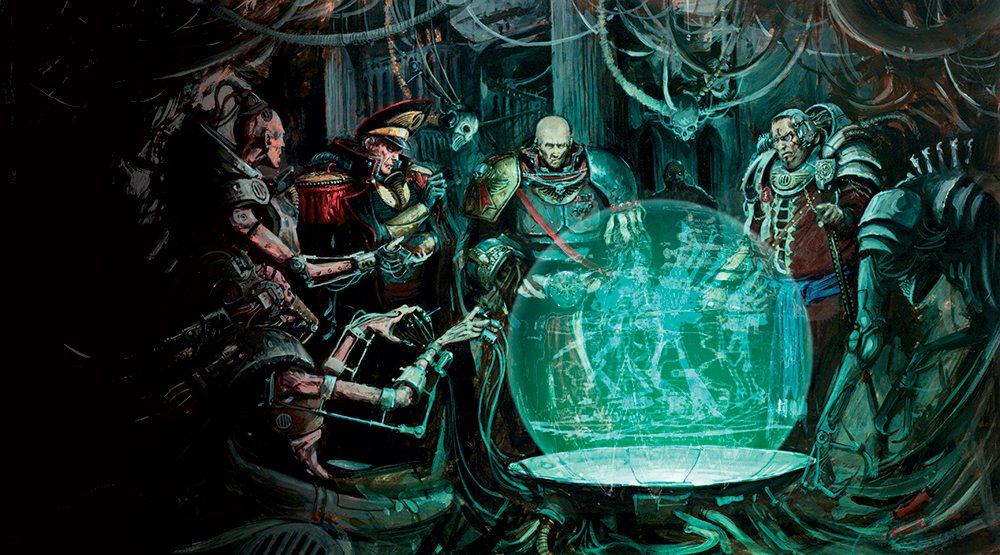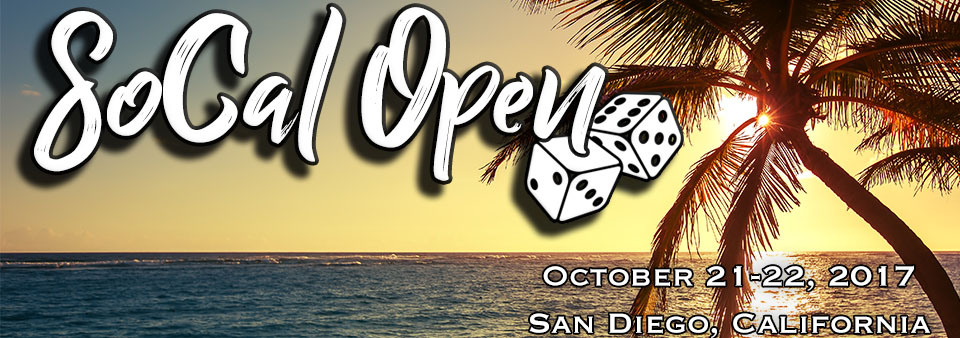
Hey everyone, here’s the ITC Champion’s Missions working draft. We plan on using these for the SoCal Open per the attendees’ requests.
Please remember, these are in DRAFT format and are subject to change, may have typos and are still being polished!
That out of the way, we are posting these now, prior to being finalized to get some player feedback and to run a type of open beta as we want them to be as solid as possible for the SoCal Open. We’ve been play-testing them quite a bit and so far, they have been well received by a wide variety of tournament players. So, bear in mind, these missions are designed for a balanced tournament play experience and are more complex than our ITC Simplified and Combined Arms missions.
8th ed requires a new approach to mission design. As things are so lethal in this edition, and games can swing suddenly, our old missions designs simply didn’t function that well for tournament play, anymore. You could have a game that was extremely close until the very end, but results in a 19-0 score, which doesn’t reflect the fun of the game at all. Also, first turn is quite powerful and as such, building in a counter to that is important.
These missions do require a bit of bookkeeping, but we’ve cooked up a score tracker to make that easier for you. The idea with the score tracker is to circle or cross off each point as you get, in an ongoing tally, then to add the running total at the end of each Battle Round for the Primary Missions, and at the end of the game for the Secondary Missions. You then add both scores for each player’s total score and the player with the higher score wins.
We will retain the 1,000/500/0 tournament points for a win, tie and loss (although in this system, a tie will be very uncommon) for the purposes of stratifying the field and overall rankings, with accumulated Battle Points further stratifying each W/L/D bracket. For example, if you went 3-2 at an event, you’d be ranked in order among all other players who went 3-2 based on your accumulated Battle Points round by round from highest to lowest.

These missions are all somewhat similar and that is done intentionally. The variety comes in objective number, placement and specific scoring parameters plus the random deployment, but to avoid missions that cause big swings in outcome due to their nature (such as the Relic) we chose to keep them all somewhat similar. For that reason, players that very much enjoy wildly varied missions, or scenario driven missions may not find as much to love in them. However, for the player that finds entertainment in trying to focus on playing their best game and overcoming their opponent, we think these will be very appealing.
We borrowed some great mission ideas from many bright minds who’ve produced some great mission sets such as NOVA Open, Renegade Open, Games Workshop’s missions, Malifaux, etc. And, we were lucky enough to get some great feedback and constructive criticism from some excellent players. Thanks to everyone that helped so far or just bounced ideas back and forth with me over the past months! We also want to thank all of you who play-test these and provide feedback here in advance.

Mission Design Concepts:
- An emphasis was intentionally placed on going second to help counter the power of first turn in current 8th ed 40k.
- The player going second in these missions get a big advantage in the ability to counter the first turn player’s moves and knowing exactly what they need to do to max their turn score, possibly denying points and getting the last chance at earning points.
- All random maelstrom elements were removed, players now choose their secondary missions based on the mission, deployment and their opponent’s army.
- Secondary Missions are intentionally difficult to get. While some may be situationally easier to achieve, a max score on secondary will not always be possible.
- Secondary Missions were chosen to counter common build archetypes in the meta. If your opponent is spamming characters, choose Headhunter. If your opponent has a mechanized army, choose Big Game Hunter; if you feel more confident going for board control, choose Recon, etc.
- Many of the Secondary Missions intentionally overlap. For example, if you find yourself facing an Imperial Knight army, choosing Titan Slayer and Big Game Hunter would be a solid choice as you would be able to achieve both, simultaneously.
- The Secondary Missions also allow you to earn points for damaging powerful units. An example of this would be choosing Kingslayer, and targeting Magnus. You may not destroy him during the course of the game, but doing enough damage to him can still earn you points.
- Each mission seeks to achieve a balance between destroying enemy units, and board control.
- The goal was to build in checks and balances between benefiting MSU and low unit count armies while also providing tools to counter the other.
- Each missions also offers up a bonus point, which can be scored each player turn but is not easy to achieve. In testing, we’ve found a player may only ever score the mission bonus point once or twice if at all. Again, this is intentional.
- An incentive to finish games to conclusion is built in to the missions as you can only achieve a maximum score if you go all 6 rounds.
- In order to keep scoring fair between rounds, all ITC Champion’s Missions are capped at 6 rounds total. This works not only to keep scoring parameters equal between each mission, but because objectives are not scored at the end of the game, but turn by turn.
- In tournaments where there are less rounds than needed for a Swiss style, undefeated player this will be especially important as battle points will determine the overall victor. Slow playing is hurting oneself.
- Most RTTs fall in to this category as a typical 3 round event only provides enough rounds of play to determine a Swiss style champion for 8 players.
- In missions with enough rounds to have a Swiss style champion, this will be less relevant but still important for tie breaking.
- It is incumbent upon both players to manage their time and if one player is indeed playing slowly, for their opponent to politely make them aware of this and to call a judge if needed.
- A great tool to assist here is writing down when your player turn ended while recording your Player Turn score. This allows each player to track how long their player turn took.
- If one player chooses to concede before the game has come to a natural conclusion, they automatically score 0 points (which is a big deal in this format as you keep all of your points earned, even if you lose), and their opponent would earn their current score and would be assumed to earn 4pts per turn for the remainder of the Battle Rounds left in the game on the Primary Mission and earn the maximum number of possible Secondary Mission points theoretically left to them.
- For example, if it were round 3 and the winning player had chosen Recon but had not yet scored any points, they would earn 3 total points for that mission as they would theoretically have 3 more turns to earn those points had the game continued.
- Due to the importance of players playing games out, and the fact that these missions are intended to be played in a competitive format, a player that concedes more than once would earn an administrative thumbs down on sportsmanship for each game they concede. In ITC format events, this will essentially mean the player cannot win any prize support and will eventually be removed from the event. Now, this isn’t meant to be overly mean, just to show folks that in order to keep things fair for everyone, you need to finish your games, even if you’re getting beaten. And, you never know, you may come back to win it!
- There are situations where both players may “talk through” the final round of their game instead of playing it out in order to save time, rolling only the vital rolls in order to determine critical events. This is fine and does not constitute a concession but only counts on the 6th turn of the game.
- If one player is tabled, they keep their points earned up until that point, and their opponent earns points in the same fashion as outlined above.
- Random Deployments means a wider variety of tactical opportunities and provides variety in each mission.
- With essentially 36 possible deployment and mission combinations, each game will be unique, forcing players to adapt and avoiding set-piece mission/deployment tactics.

We’ve put a lot of time and energy in to these, but we’d love to hear from you! If you all could be so kind as to give them a whirl and let us know what you like, don’t like, if you spot any typos, or perhaps what was simply unclear, we’d be very grateful! Do you like the scoring tracker? Do you see any ways to make it easier to use or better? Help us to give you the best possible mission sets for a fun and fair 8th ed tournament scene.

For the SoCal Open specifically, we will be accepting any and all feedback up until Tuesday, October 17th at which time they will get locked in place. For those of you coming to that event, be confident that the missions will largely be what you read, here. We may alter them slightly but don’t expect major changes unless we spot a massive problem. We may change details and the order in which they appear, but plan on playing these 6.
The Mission Tracker is universal and can be applied to each mission. As stated, you circle or check off each point as you get it.
- For example, if you get 2 points in your first player turn, you circle the 1 and 2. If at the end of the Battle Round you scored another point, you circle the 3. For the turn 1 running total, you then write in a 3. If after the second turn you picked up another 4 points total, your running total would then read 7, and so forth.
- For Secondary Missions, you circle each point as you earn it.
- At the end of the game, you add your Primary and Secondary Mission Scores together and the player with the higher score wins.
8th Ed. ITC Champion’s Missions Draft
8th Ed. ITC Mission Tracker Draft
Now, again, these are not final documents! There’s still quite a bit to do, like update the graphics, formatting, etc. Please keep that in mind.
And remember, Frontline Gaming sells gaming products at a discount, every day in their webcart!



Glad to finally see some love for going second it’s sorely needed. “You could have a game that was extremely close until the very end, but results in a 19-0 score, which doesn’t reflect the fun of the game at all.” This is really big too !!!
Yeah, we wanted games that reflected the actions of it, not just where things fell on the last turn.
Seems like you get extra fucked my your opponent slow playing, since you definitely cant score enough points if they keep you stuck in <4 rounds.
I super don't enjoy Nova Style missions, but it'll be interesting to see how this plays out.
Alright, on a second read over, the sky isn’t falling and I’m liking them slightly more. Not sure I’m in love, but I’ll happily give them a test run before I pass any harsh judgement.
Yeah, try them out. And the slow player hurts himself, so the knife cuts both ways. Both players need to keep an eye on the clock.
Guys,
Swap 2a and 2b, rolling for deployment and then placing objectives. Reversing those two will help from dunces getting creamed on smarter objective placement that favors the deployment chosen.
3c. The player that was forced to go second, as in the other guy won the roll, gets to seize. Not the guy who chose 2nd. He should get to decide to seize.
4. No random game length:
You just made John A. Weyermuller get down on his knees and cry happy tears of joy.
-Casey
BeerHammer
“Swap 2a and 2b, rolling for deployment and then placing objectives. Reversing those two will help from dunces getting creamed on smarter objective placement that favors the deployment chosen.”
Absolutely agree. Perhaps that is intended to be that way in the mission pack? I don’t know, but if so then it makes that initial roll VERY important as you are now picking your deployment zone and then getting to place objectives.
That said, the fact that most of the objective’s placements are already pre-determined makes it not as significant as it could be to roll deployment zones prior to objective placement.
Objectives are very defined where they can be placed, or are pre-determined. It isn’t that big of a deal in these missions but I appreciate the feedback and will take another look at the verbiage.
Also, if you chose to go second and then decided to try and seize, go for it, haha. It is a pointless thing to do.
Dang it! Typo:
“3c. The player that was forced to go second, as in the other guy won the roll, gets to seize. Not the guy who chose 2nd. He should get to decide to seize.”
He should NOT get to decide to seize.
They look good. I’ll have to give them a try. The one significant problem I saw is with the Kingslayer secondary: The Objective requires you to pick a Character Model, but then describes a different effect if the Model you chose is a Character or Monster. There is no way to select a Model that fits the basic version of the Objective. Should the basic version let you pick a non-Character, or should the harder version be something like “Vehicle or Monster”?
Mission Tracker: Not needed, but maybe include a spot to write in which Secondaries are being used. Possibly also a spot to mark the Turn Number that each Point toward each Secondary was scored, rather than just circling them as they are scored. It could help people keep things straight if they’re doing write-ups afterward, and might also be helpful in resolving some disputes after the fact.
Also, I hadn’t seen the ITC Simplified Missions before, and noticed an oddity on them, particularly on #5, Secure and Control: The Deployment Zone is rolled for by the Player who placed the last Objective, but the Objective placements are fixed by almost all the scenarios. Why bother having alternating placements for them at all? Just place as directed, then roll off for determining Deployment Type?
Secure and Control has a slightly different, but more serious issue, as you don’t determine Deployment Zones until after placing Objectives, but you don’t place Objectives until after picking Deployment Zones. Changing all of them to just rolling off for who makes the roll for Deployment Type and picks their DZ first would clear all that up.
Maybe they meant the 2nd part of Kingslayer to state Character -and- Monster. (Such as Magnus and Morty) to make up for the fact that you can always shoot them and they have 18 wounds…
Yeah, it is meant to kick in if the model in question is both a character and a monster or vehicle. Will clean it up.
Like the look of it, I’m keen to see how it rolls out.
Only thing I’m disappointed in is there is still no good slow play mechanism. If I knew I couldn’t win, there are lots of ways I can still slow the game down during my opponents turn as well as my own to stop them getting max point’s.
Has itc looked at a hard slow play tool to roll out? Chess clock/death clock setup. It wouldn’t even need to be a hard auto lose, even if you gave up every possible point to your opponent for all remaining turns it means you played extremely well for the first 4-5
There’s not much to be done about it, the players need to keep an eye on the clock. We may introduce chess clocks for events like the LVO finals but in general play, it is pretty difficult to implement it realistically.
Not really. Wmh has been doing it for years
There’s also phones/tablets etc that players can provide.
It’s frustrating for me because i play tide lists, i have to defend myself as soon as a game runs long even if it’s on my opponent.
I think the idea behind these is very cool, scoring on your turn and the battle round is a very neat solution to the whole alpha strike thing. Not a particularly competitive player so probably can’t give much useful feedback but I’m liking the direction.
Thanks for the feedback.
On “the reaper” is the intention 10 or more or is it effectively 11 or more?
Its 10 minimum as I read it.
10+ signifies 10 or higher. As 20+ is 20 or higher.
Yes, 10+
More fun, rewards for playing fair and well?
This is it! that’s what we need.
Choosing the secondary mission seems gorgeous to balance the chances between lists.
And it opens to play some list I am in love with, instead of having to get “the power list” of the codex to be competitive.
Thank you cooking this.
You are very welcome.
These are great, while I loved the randomness of the maelstrom,( i built around it) I believe that overall these will help more people play the army they want while not being janked by the three dice they roll at the start of the turn, keep the god work up guys.
You got it! Glad you like the look of them.
Hey, I am not super clear on which missions are considered “Primary Missions” and which missions are considered “Secondary Missions” what am I missing?
The objectives are the primary. The secondaries are the ones you pick like Recon, Headhunter, etc. Primaries can be scored throughout the game. Secondaries are scored based upon the written conditions.
Chandler is correct.
I’m not sure I’d qualify the secondaries as hard to achieve; they feel like they’re pretty easy.
Perhaps for you they will be which is awesome! We have found that it is rare to max them out, but hey, we want to see them in the wild to really get a feel for them.
Hey, thanks for the response. I guess we’ll have to see how this influences list building – I know that I’m going to switch up a bunch of my larger units to units of 19 instead of 20.
Mostly though, I know that our community really appreciates you guys coming out with some new scenarios. It’ll definitely keep things a little fresher up here in Alaska.
I am a little skeptical about going 6 full turns, mainly because a lot of people still are playing horde type armies. I dont think people are slow playing as much as considering what their next move is, but some horde armies such as orks and AM might not make it to round 6 without skipping a phase that could determine the game later on, or take too long to get past a round when time runs out. When I played against horde orks at the BAO we barely made it to round 3, just an opinion. Overall for a draft it seems like with some picture editing on setup it is ready to go.
Yeah, everyone needs to focus on playing faster or they just won’t get as many points. You don’t have to go to 6, you just hurt yourself if you do not.
So the idea is sometimes to choose to let a unit live to prevent tabling an opponent to keep going another round? Or should we also be trying to kill things like normal? I think I got tabled 3-4 times this edition.
You can make that choice but you get a lot of points for tabling someone, however, it is not an automatic victory.
?
Feels like Big Game Hunter should be 8 wounds or more, to include Dreads and Daemon Princes
We debated the break point and fell on 10. Daemon princes can be targeted with Head Hunter and Dreads? Well, haha, might as well encourage folks to actually bring them =P
What about just making it tied to the Vehicle and Monster keywords?
Not unworkable, but it does leave some gaps and bring in some odd stuff. Sentinels and other light vehicles don’t feel like they should be qualifying, and meanwhile there are some other 10W+ models that are neither vehicles nor monsters and thus would slip by. I think it’s probably fine where it is.
Laughs in Dreadnought*
No one brings all dreads
*sweats as he looks over his all dread spacewolves list
Haha, some of you do bring the Dread armies, true, but it is certainly uncommon!
Seems like people will get penalised for their opponents playing slow which is pretty lame…Some way to track time per player will be needed but unless it goes to the extent of deathclocks it will cause kinds of shit fights even with the TO involved, and tallying up points at the end of every turn is going to eat into time too…adding all of it seems like it will compound the time problem not fix it.
All the while the missions lean towards horde play which will also cause people to push the boundaries of the above…
Remember, slow play hurts both players, not just one of them. And hordes in this format can bleed points faster than any other armies as destroying one large unit can end up yielding 3 or even 4 points to the other player, so the format does not favor slow playing horde armies at all, actually. It does favor horde armies that can survive to end game and establish board control, though.
The issue is that if you’re already loosing the game, slowplay doesn’t really hurt you much- the worry would be that someone who is stuck in a bad matchup has every incentive to go as slow as possible, since they’re gonna do poorly either way and by stopping the other player from getting a full six turns in, they can deny them points out of spite.
I don’t think it’s something that you’re likely to see a lot of, but it’s absolutely something that I think will come up.
It could happen, yes, which is why if that seems to be hapenning it is important for the other player to take action to keep the game moving along.
Players don’t themselves have any real tools to force an opponent to play quickly. Without a judge intervening (or time being called near the end of the round), there’s not really any way you can FORCE your opponent to play more quickly if they decide they don’t want to. And by the time the issue becomes real, you’ve probably already spent most of the round, which makes it even harder to deal with.
The thing is, it happens now. The format isn’t going to make someone that was not going to slow play, start to slow play. People that do it intentionally (who are a very small group) will do so regardless of the format if that is a tactic they feel they will unethically employ. It has always been a problem in this game, and as always, it is up to the people at the table to police themselves. We can’t have a judge at each table. It must be the players’ responsibility to keep an eye on the clock.
Looks over at Dread Knight Army and sweeps them into the trash… Pulls out Guard Codex and starts humming battle cadences.
Don’t do it Sam. Keep playing them!
“Distances are measured to and from models to the closest point of Objectives.”
So if I have an ork on a base, and the base is 3 inches away but the model’s foot is over 3 then it’s not in?
I think there needs to be some specification on this to you bases only unless the model doesn’t have a base then closest point of the model.
The basic 40K rules specify that you always measure to bases, so doing so again in the mission rules is unnecessary.
Maybe I missed something but I don’t see anything for Ties?
“Headhunter: 1pt for destroying an enemy character. ”
The rest of them say “each time” this doesn’t include that so it looks like only 1 point can be scored
For the reaper
Considering we have many ways of adding models to units. Shouldn’t you get a single point for destroying 10+ models from a unit and 2 points for destroying 20+ models from a unit?
Table quarters
“Have a unit at least partially in each table quarter at the end of your player turn.”
This should probably be one of the players units, not just any unit.
Big Game Hunter: 1 point for every model with 10 or more wounds you destroy.
Would this mean if I overheat and kill my Russ my opponent gets no points?
what if I mind control one of his tanks and kills something. I think this one should be determined on whatever dies, not on what kills it.
Death by a Thousand Cuts: Each time you destroy 3 or more enemy units in a single Battle Round, you earn 1 pt.
Same as above, I don’t think it should matter what kills them if you get credit. Also, does moral matter for this?
Bonus point scored at the end of the controlling player’s turn: Do you hold or contest 5 or more objectives? For an objective to be contested, both players have models within 3” of it but neither controls it. This typically occurs because both players have an equal number of models within range of the objective and either none of them are Objective Secured or all of them are.
Does this means two fliers on an objective count as contested?
Take and Hold Objectives are controlled by having the most units within 9” of the objective. Objective Secured units gain no benefit in holding Take and Hold Objectives.
Do fliers count for this?
I love 99% of this, but Tau drones are going to be unplayable 🙁
If a huge part of every mission is to kill 1 unit a turn, taking a unit with 2 gun drones (acting as a separate unit) is just a way to forfeit.
Realistically, “kill a unit every turn” is a pretty trivial thing for most lists to achieve. If you’re not doing that, you’re probably out of the game already.
It does become problematic when you get to the “kill more units than your opponent” step at the end of each round, though- Tau are already bad at holding objectives, so also being bad at Kill Points is gonna be painful.